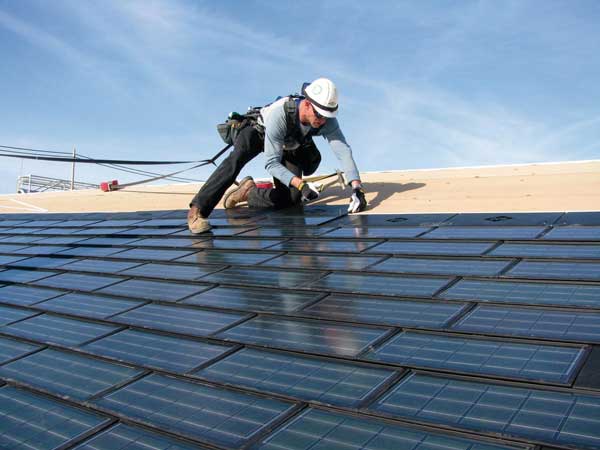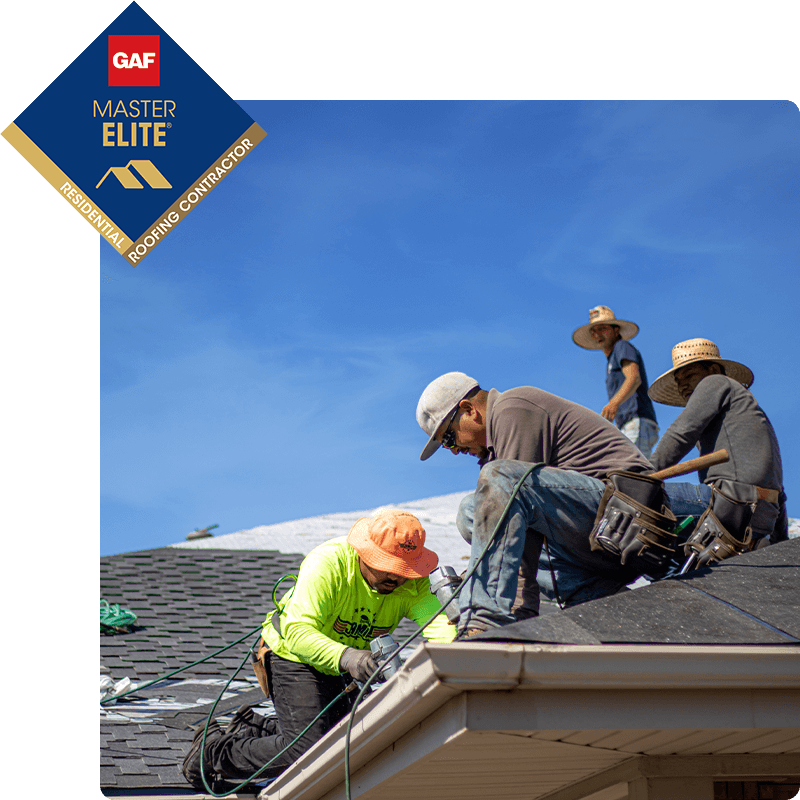A Comprehensive Guide to Effective Roof Apartment Roofing System Setup
The details of level roofing setup demand a meticulous strategy, starting with a thorough understanding of different flat roof covering types and the vital products needed for optimum efficiency. A successful installation pivots not just on the selection of materials however also on the prep work and execution of each step involved in the process.
Comprehending Flat Roofing System Kind
When considering flat roof coverings, it is vital to understand the numerous kinds offered, as each offers distinct advantages and disadvantages tailored to certain needs. The most usual types of flat roofing systems consist of Built-Up Roofing (BUR), Changed Asphalt, and Single-Ply membrane layers.
Built-Up Roof is composed of numerous layers of asphalt and gravel, offering exceptional sturdiness and weather condition resistance. It is particularly beneficial in areas vulnerable to severe climate problems yet may require even more maintenance as a result of its complex building and construction.
Changed Bitumen is a popular choice for its simplicity of setup and versatility. It often uses a self-adhesive or torch-applied method, which can be useful for quick repair services and lasting efficiency. However, its lifespan can be much shorter compared to BUR.
Single-Ply membrane layers, consisting of Thermoplastic Olefin (TPO) and Ethylene Propylene Diene Monomer (EPDM), are acknowledged for their light-weight nature and power effectiveness. These products are typically chosen for business buildings because of their cost-effectiveness and simplicity of setup (Cleveland Roofing Specialists). Nonetheless, they may not offer the very same level of insulation as other options.
Each roof covering type requires careful consideration based on environment, budget plan, and details job needs.
Important Materials for Flat Roofing
A selection of essential products are critical for the effective setup of flat roof covering systems. The selection of materials straight impacts toughness, efficiency, and overall effectiveness.
Among the key materials is the roofing membrane, which can be built from numerous substances such as polycarbonate polyolefin (TPO), ethylene propylene diene monomer (EPDM), or PVC. Each type supplies special benefits, consisting of UV resistance and adaptability, which are important for extended performance.
In addition to the membrane layer, insulation products play a considerable function in power efficiency. Stiff foam boards or polyisocyanurate insulation are popular choices, as they give outstanding thermal resistance and wetness management.
In addition, roof covering adhesives and sealants are essential for making sure a watertight installation. These products should work with the chosen membrane layer to stop deterioration in time.
Getting Ready For Setup
Appropriate preparation is necessary for an effective level roof covering installation, as it prepares for a efficient and resilient roof. Begin by carrying out a detailed evaluation of the existing roof structure. Seek indicators of damages, consisting of leaks, rot, or poor water drainage, which can jeopardize the brand-new roofing system. Make sure that the underlying materials are audio and can sustain the weight of the new roof parts.
Following, collect all necessary tools and materials, making sure that they fulfill industry standards. This includes water resistant membranes, insulation, blinking, and bolts. Acquaint yourself with the manufacturer's specs, as adherence to these guidelines is vital for service warranty objectives.
Think about weather problems; prevent setup throughout heavy rainfall or extreme temperature levels, which can impact material efficiency. By taking these preparatory steps, you can boost the possibility of get redirected here a successful level roofing system installation that satisfies both aesthetic and architectural demands.
Step-by-Step Installation Refine
With the groundwork developed with comprehensive prep work, the next stage includes carrying out the flat roof covering setup systematically. Begin by making sure that the structural deck is tidy and totally free from debris. Next, install a vapor barrier to stop moisture buildup below the roof covering material. This action is essential for keeping the roofing system's honesty in time.
Complying with the vapor obstacle setup, lay down insulation boards, ensuring they fit securely with each other to lessen thermal bridging. Protect the insulation with proper bolts based on the roofing kind and local building regulations. When the insulation remains in place, it's time to apply the roof membrane layer. Depending on the selected product-- such as TPO, EPDM, or changed bitumen-- install the membrane according to the maker's requirements.
Make certain correct overlap at joints and sides to develop a water tight seal. Make use of adhesives, mechanical bolts, or heat welding as required. Finally, install blinking around perimeters, vents, and any roof covering infiltrations to boost waterproofing. After installment, perform a detailed inspection to recognize any kind of possible problems before concluding the project, ensuring a trustworthy and robust flat roof system.
Maintenance Tips for Long Life
Routine maintenance is important to make sure the longevity and efficiency of a flat roof. Among the primary jobs is to carry out routine assessments at least two times a year, ideally in springtime and autumn. Throughout these assessments, search for indicators of wear, such as blisters, splits, or pooling water, which can show underlying problems.

Making certain proper drain is critical to stop water build-up. Examine and clear gutters, downspouts, and scuppers to guarantee unblocked water circulation. In addition, inspect seals around vents, skylights, and other penetrations for any kind of indicators of deterioration, applying caulk or sealant as needed to preserve a water tight obstacle.
Last but not least, consider professional maintenance services my blog every few years for extensive examinations and fixings. By adhering to these upkeep tips, you can substantially expand the life of your level roofing, guaranteeing it remains a dependable shield versus the elements.
Final Thought
Efficient flat roofing system setup requires a systematic approach encompassing detailed inspections, material option, and thorough prep work. Following the detailed steps during the installation procedure makes certain the correct application of roof membranes and insulation while enhancing waterproofing through reliable blinking setup. Executing routine upkeep methods considerably contributes to the durability of the roofing system. By complying with these standards, a long lasting and trustworthy level roof option can be important link accomplished, efficient in withstanding different environmental conditions.
The intricacies of level roofing system installment need a meticulous method, beginning with an extensive understanding of numerous flat roof covering types and the necessary materials required for optimum efficiency.Correct prep work is necessary for an effective level roof setup, as it lays the foundation for a reliable and durable roofing system. After setup, perform a complete evaluation to determine any kind of possible problems prior to concluding the project, making sure a durable and dependable flat roof covering system.

Comments on “Affordable Cuyahoga Falls Roof Repairs for Long-Lasting Roof Solutions”